FEATURES|COLUMNS|Creativity and Contemplation
The Heart of Pilgrimage
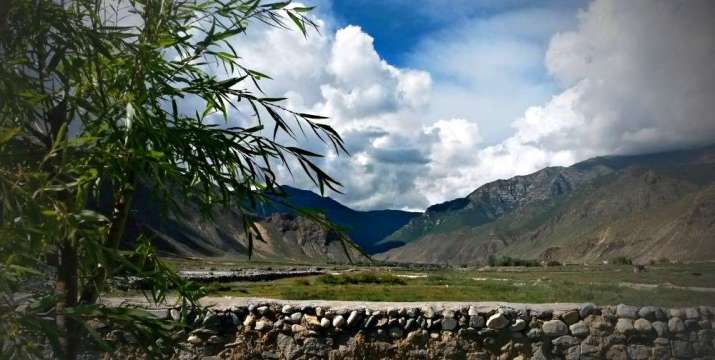 Drak Valley, Tibet. Photo by Dechen Steele. From sangha-journeys.com
Drak Valley, Tibet. Photo by Dechen Steele. From sangha-journeys.comEvery year, sometimes twice, my teacher Lama Dechen Yeshe Wangmo takes a group of committed practitioners to some of the sacred places in Tibet, most especially Tsogyal Latso, the birthplace of Yeshe Tsogyal. Even though I have not yet joined this group, every time they go, I follow from my laptop and feel a part of my heart goes with them. How can there be such a strong pull toward a land, a country, and a culture not my own? Sometimes I think that it points toward past lives as I can find no other explanation. I have only visited one Buddhist country, Thailand, and it was magical to be surrounded by temples and mini shrines on street corners, as well as Buddhists everywhere. Thailand has social and political problems like anywhere else, but it was palpably different to be in a Buddhist country, as opposed to a somewhat Christian, and also nihilist/materialistic, culture such as that of the United States.
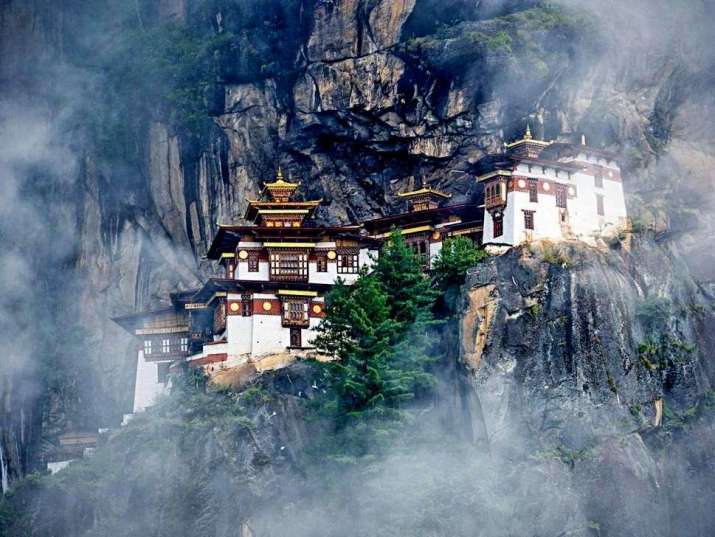 Paro Taktsang, Bhutan. Photo by Zoheb Mashiur. From thedailystar.net
Paro Taktsang, Bhutan. Photo by Zoheb Mashiur. From thedailystar.netWhy are some of us compelled to visit (and revisit) sacred or personal places of power and mystery in our lives? For some, pilgrimage is an annual event, while for others it may come only once in a lifetime or remain as an aspiration. Sacred places draw us, from a place deep in the soul or psyche, back home. Sometimes this return is to an actual home place or homeland. But often we feel a powerful draw to a place without truly understanding why. I have always felt this way about Paro Taktsang, or the Tiger’s Nest, in Bhutan. It is a power spot of Dorje Drolo practice, a wrathful manifestation form of Guru Rinpoche. I truly yearn to visit there, and while I was in retreat I had visions of being there.
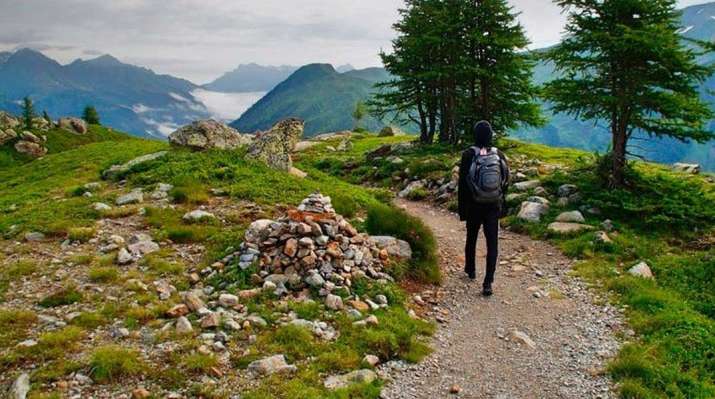 From vivecamino.com
From vivecamino.comSeveral years ago, my parents spent two consecutive summers trekking across France and then Spain on the Camino de Santiago, a famed network of Christian pilgrimage routes dating at least to the Middle Ages. They endured many kilometers of blisters, rain, and mud, alongside pilgrims from many countries and continents. Although not Christians themselves, my parents are avid hikers and the activity of hiking is itself a form of pilgrimage and meditation. They have spent countless summers walking in the Swiss and French Alps, as well as mountains in the US. I was raised on hiking and backpacking, which in and of itself is a form of reverence for nature and just being alive!
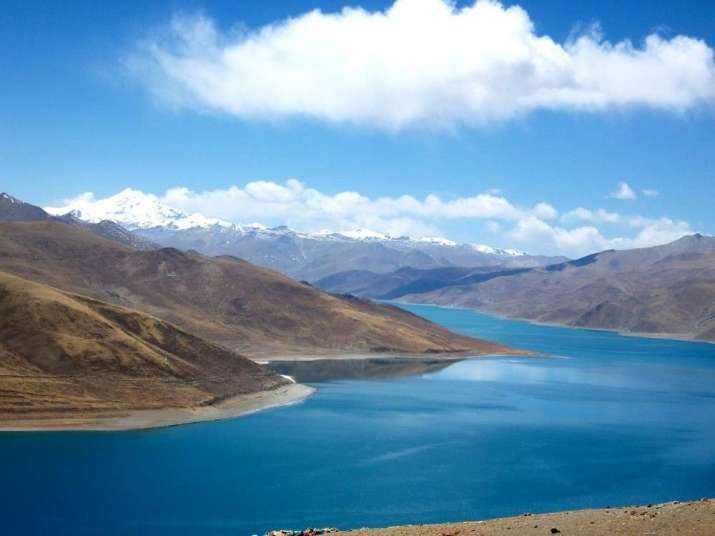 Yamdrok Yutso Lake, Tibet. From sangha-journeys.com
Yamdrok Yutso Lake, Tibet. From sangha-journeys.comThe difference I see between destination travel tourism and pilgrimage is the motivation for the undertaking, as well as the attitude while traveling. It is deeply impressive to see photos or videos of practitioners in Tibet and Nepal doing circumambulations by prostration around entire mountains! Clearly, although one will eventually arrive at a sacred destination, then return to their starting point, the point is in the devotion of body, speech, and mind offered along the journey. When I travel I often write, receiving much inspiration from the world at large—traveling opens my mind in ways that are akin to meditation, the freedom, expansion, and relief from intense self-focus that comes when opening to the larger world experience.
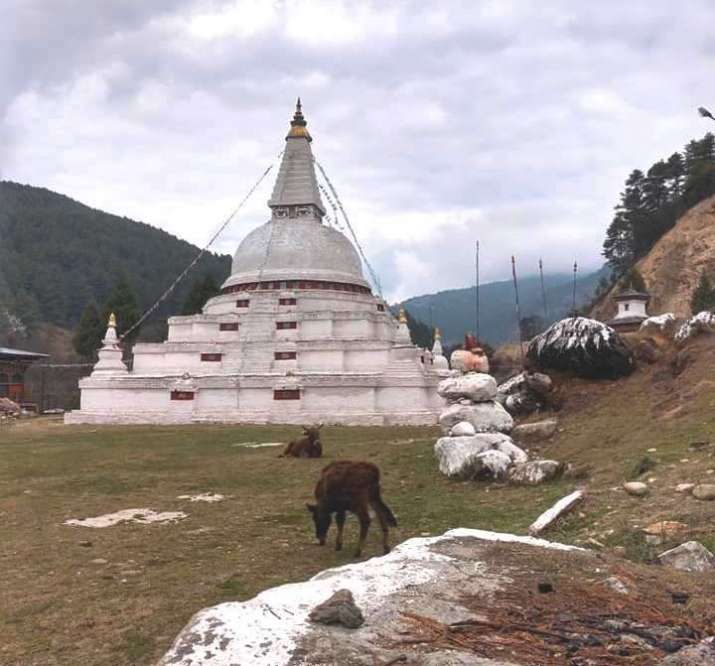 Bhutanese Stupa, 2019. Photo by Amelia Hall. From facebook.com
Bhutanese Stupa, 2019. Photo by Amelia Hall. From facebook.comInner pilgrimage can also be a practice. If one is not able to travel to foreign lands or even to return to a childhood place of reverence and fondness, we can engage this practice aspect in our minds as a meditation of visualization, which can be almost as powerful.
Natural places and monuments can also be objects of refuge and journeying. For me Walden Pond in eastern Massachusetts is such a place. It captured me many times as a teenager, riding my bike more than 30 miles to arrive there and back to swim in its cool waters, as Thoreau himself did. Not mere places of nostalgia, pilgrimage sites speak to us as individuals, and as a collective, whether for the spiritual, cultural, or familial ties that we have to these special places.
I also truly yearn to return to the gompas of Brazil, Khandro Ling, and Odsal Ling, where I spent formative time as a new Buddhist practitioner. I feel what in Portuguese is called saudade—a sort of deep, internal longing for a home or beloved place/people/culture. May each of us experience the great fortune of not only knowing where our pilgrimage sites are, inwardly and outwardly, but also have the chance to travel to them and fulfill our heart’s deepest wish for reunion.
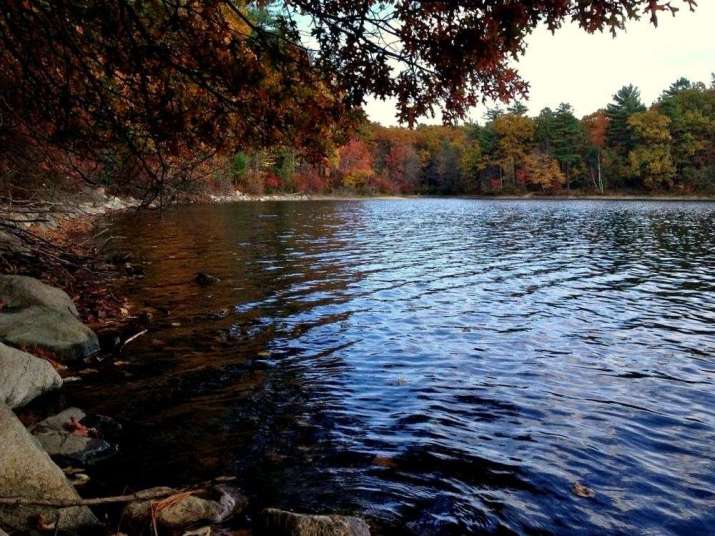 Walden Pond, Massachusetts. Photo by Andrew Douglass
Walden Pond, Massachusetts. Photo by Andrew DouglassSarah C. Beasley (Sera Kunzang Lhamo), author of Kindness for all Creatures: Buddhist Advice for Compassionate Animal Care (Shambhala 2019), has been a Nyingma practitioner since 2000, Certified Educator, and an experienced writer and artist. She has a BA in Studio Art and is an MA Candidate in Educational Leadership. Sarah spent close to seven years in traditional retreat under the guidance of Lama Tharchin Rinpoche and Thinley Norbu Rinpoche. With a lifelong passion for wilderness, she has summited Mt. Kenya and Mt. Baker, among other peaks. Her book and other works can be seen at www.sarahcbeasley.com.
Related Features from Buddhistdoor Global
Journeying Across Shikoku: The Shikoku Pilgrimage
Stepping into the Mandala – A Journey to Ankor Wat
The Many Buddhas of Malaysia














